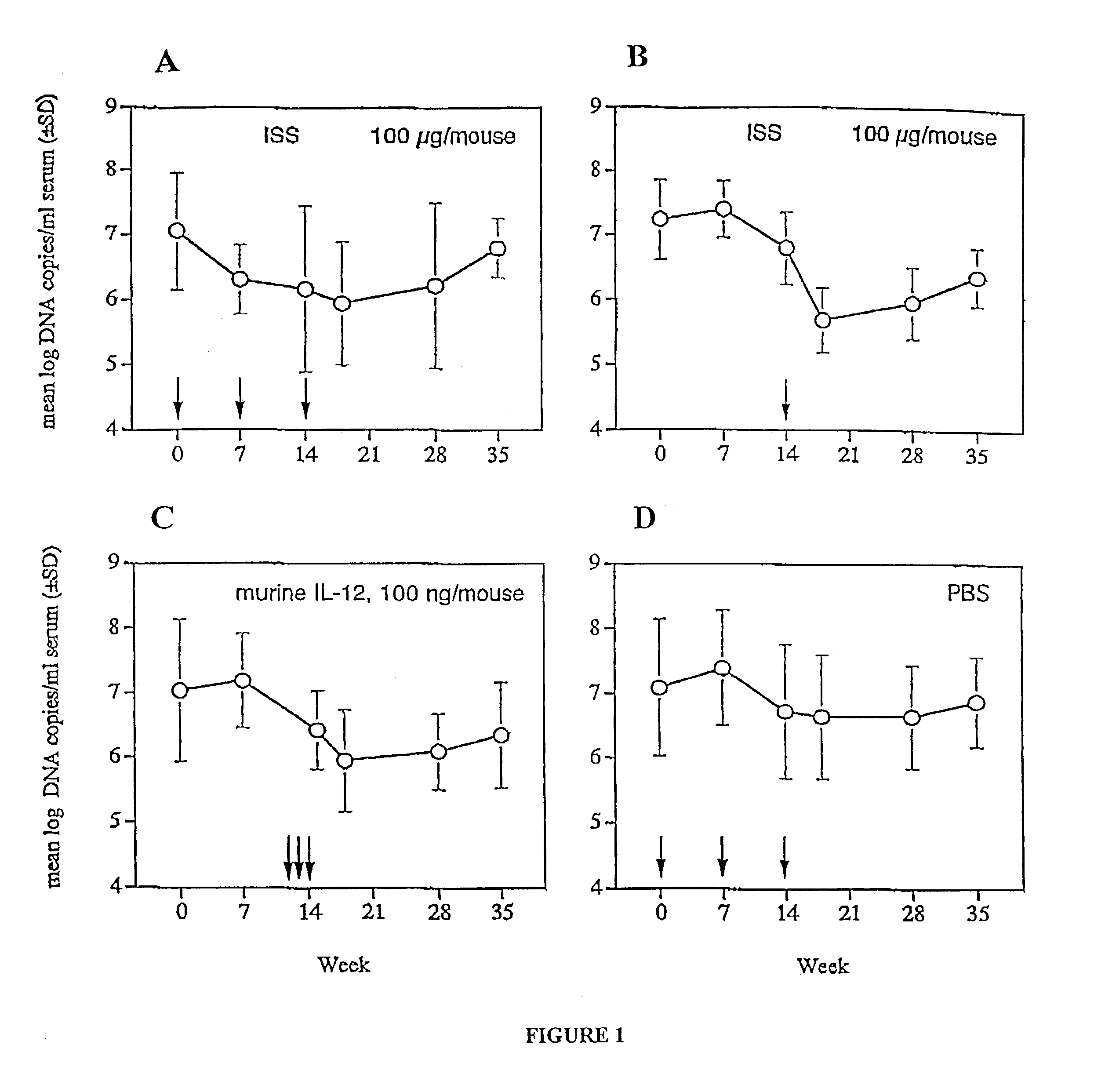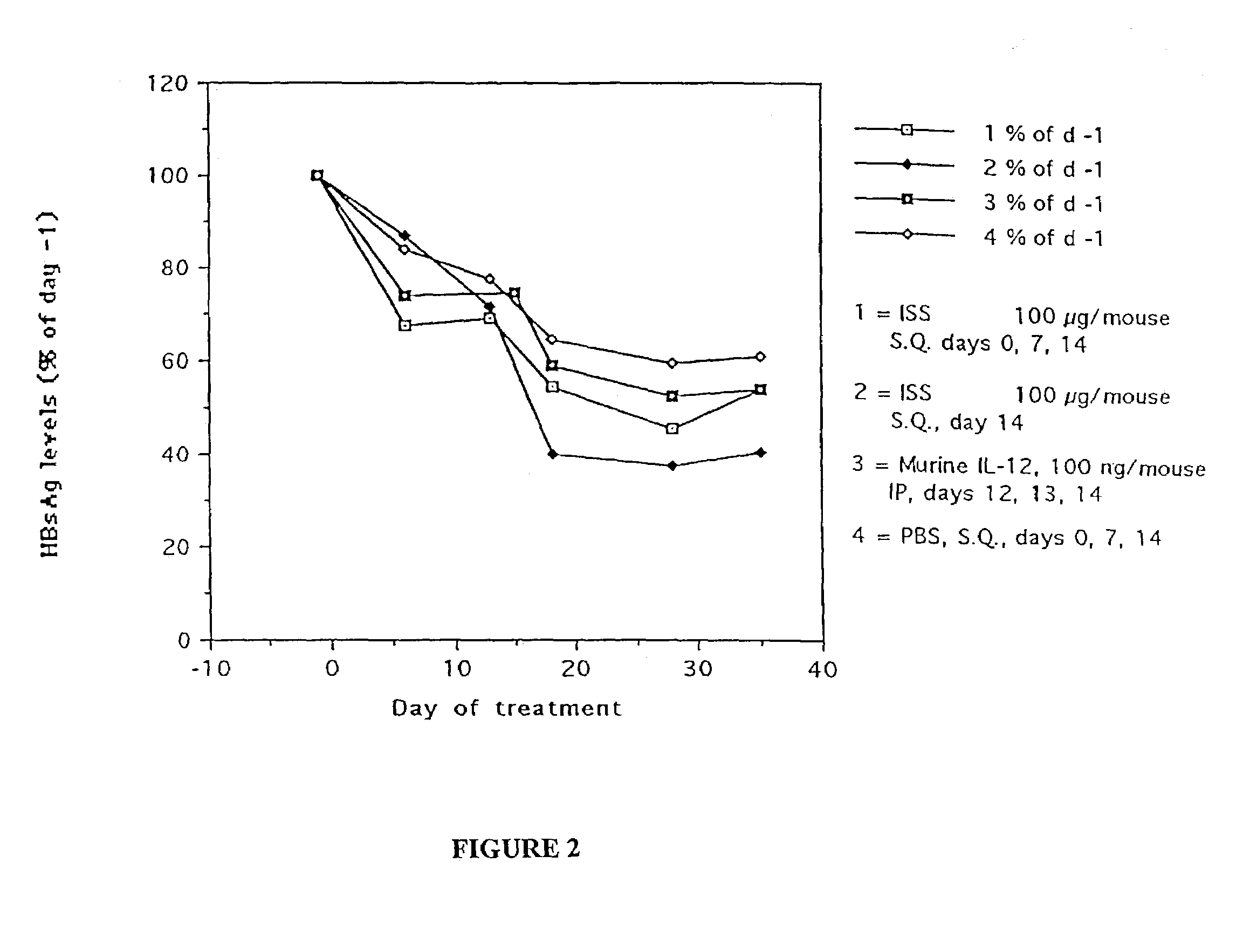Methods of suppressing hepatitis virus infection using immunomodulatory polynucleotide sequences
a technology of immunomodulatory polynucleotides and hepatitis virus, which is applied in the field of immunomodulatory polynucleotides, can solve the problems of hbv infection, hcv infection carries a much greater risk of chronic liver disease and liver failure, and each disease poses significant medical problems, so as to reduce the incidence and/or severity of hbv, suppress and/or ameliorate hepatitis infection, and prevent, pall
- Summary
- Abstract
- Description
- Claims
- Application Information
AI Technical Summary
Benefits of technology
Problems solved by technology
Method used
Image
Examples
example 1
Administration of an ISS in an Animal Model of Chronic HBV Infection
[0140]ISS activity was tested in an animal model of chronic hepatitis. An ISS-containing phosphorothioate oligonucleotide (5′-TGACTGTGAACGTTCGAGATGA-3′) (SEQ ID NO:1), was delivered to STC strain transgenic mice, followed by measurement of HBV DNA and HBsAg production.
[0141]STC line mice were developed at Stanford University by Patricia Marion. The majority of these mice secrete HBV of the Ayw genotype (Galibert et al. (1979) Nature 281:646) to titers of 106-8 viral genome equivalents per ml of serum. STC mice were derived from the FVB strain, and were constructed by microinjection of HBV genomic DNA. STC mice have been shown to be responsive to drugs which inhibit HBV replication, and so are considered a good model of chronic HBV.
[0142]Approximately one month old mice were bled and tested for serum levels of HBsAg, which is predictive of viral DNA titer. A pool of 40 STC mice with approximately equal levels of HBsA...
PUM
| Property | Measurement | Unit |
|---|---|---|
| Length | aaaaa | aaaaa |
Abstract
Description
Claims
Application Information
 Login to View More
Login to View More - R&D
- Intellectual Property
- Life Sciences
- Materials
- Tech Scout
- Unparalleled Data Quality
- Higher Quality Content
- 60% Fewer Hallucinations
Browse by: Latest US Patents, China's latest patents, Technical Efficacy Thesaurus, Application Domain, Technology Topic, Popular Technical Reports.
© 2025 PatSnap. All rights reserved.Legal|Privacy policy|Modern Slavery Act Transparency Statement|Sitemap|About US| Contact US: help@patsnap.com


